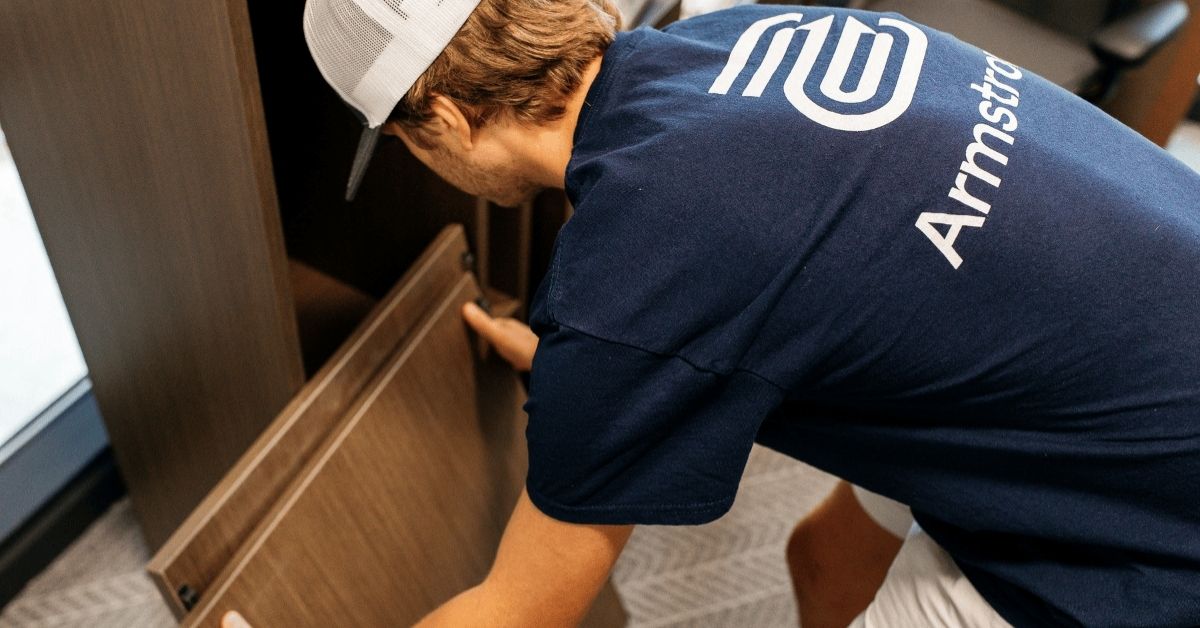How to Liquidate Office Furniture: A Business Owner’s Guide

Downsizing your office space or moving your business to a new location? It’s the perfect time to consider how to liquidate office furniture.
Selling surplus furniture not only allows you to recoup some of the original investment in these assets, but could also offset the costs of your office move, as well as freeing up valuable space.
However, liquidating office furniture is one more task that adds to the workload of managing your office space, and could be a headache. We’ve created this detailed guide to help you explore various liquidation strategies and tips that should make the process as smooth and cost-effective as possible.
Why Put Your Office Furniture Up for Sale?
Companies may choose to sell their used office furniture and equipment for a variety of reasons.
It could be that they’re moving to a new location with limited square footage; they may have been forced to downsize, suddenly leaving them with excess assets; or maybe it’s simply time to upgrade to a more modern or better quality image. Better facilities can have a positive impact on your employees as well as your reputation.
And of course, there’s the unfortunate scenario of closing down the business, when all assets must be liquidated.
Methods for Liquidating Office Furniture
You may need to consider a variety of strategies for shifting excess office inventory, depending on the volume and condition of the furniture to be disposed.
You can get around those issues by working with a company like Armstrong, which specializes in asset decommissioning, liquidation, and furniture recycling. We can handle all aspects of office liquidation, from furniture appraisal to removal and final sales.
Here are the most common methods:
1. Direct selling:
You can turn to online marketplaces like Craigslist, Facebook Marketplace or eBay, which puts you directly in control and potentially yields a higher return. This allows you to list individual items of office furniture, rather than bulk, which could improve returns.
2. Consignment Stores:
If your furniture is in good condition, consider selling it through a consignment store specializing in used office furniture. The store sets the price and takes a commission from the sale.
3. Donation:
You’d be surprised how many private individuals or struggling businesses would be interested in your old office chairs, task chairs, desks, and other furnishings. Donating excess office furniture to a charity is a viable option if maximizing returns is not a priority for you. And with this option you may even be eligible for a tax deduction.
However, these three methods require some research to work out how to proceed, and may even require you to dedicate time to sales tactics when you could be focusing on your core business.
You can get around those issues by working with a company like Armstrong, which specializes in asset decommissioning, liquidation and furniture recycling. We can handle all aspects of office liquidation, from furniture appraisal to removal and final sales.
As a furniture liquidator, Armstrong can take care of advertising, removing the furniture from your premises, and eventual negotiations.
This can be convenient, but be sure to shop around when considering a furniture liquidator or general liquidation company. Not just in terms of their fees, but some may also insist on adverse conditions, such as only purchasing in bulk.
Which Liquidation Strategy is Right for You?
If you are subject to tight time constraints or have a particularly large quantity of office furniture to get rid of, a liquidation company or furniture liquidator could be your best bet.
This also holds true if your furniture inventory includes specialized pieces. Experts like Armstrong will know how best to advertise assets of this kind, and may have a more adequate list of contacts.
Furniture in good condition is especially apt for selling through direct sales or consignment stores, and may benefit from being sold individually if your goal is to obtain the best resale value.
Tips to Maximize the Value of Your Office Furniture
If you’re not in too much of a rush to sell, it’s worth planning how to get the most out of your office liquidation. Knowing that you got the best value could make it a lot easier to bear all this upheaval.
Some basic suggestions in this regard are:
- Clean and Repair: Before selling, make sure the furniture is thoroughly cleaned and any minor repairs addressed.
- Accurate Documentation: Create a log of the brand names, original purchase price, condition, and dimensions of each piece.
- Take Great Photos: High-quality photographs of your office furniture make a considerable difference in attracting buyers.
- Competitive Pricing: Check comparable listings of furniture in a similar condition to be sure you’re offering a reasonable price.
- Consider Storage Fees: Factor in the potential cost of storage if the liquidation process is likely to take some time.
Don’t Treat it as an Afterthought
Take stock of your office furniture early in the process of planning an efficient business move or office resizing. Dealing with an office furniture liquidation at the last minute opens you to potential hassles or the risk of leaving money on the table. Our relocation and decommissioning services can handle different liquidation strategies when it comes to excess and obsolete furniture.
Invest in proper planning so that you have time to research all the options and avoid rushed decisions.
